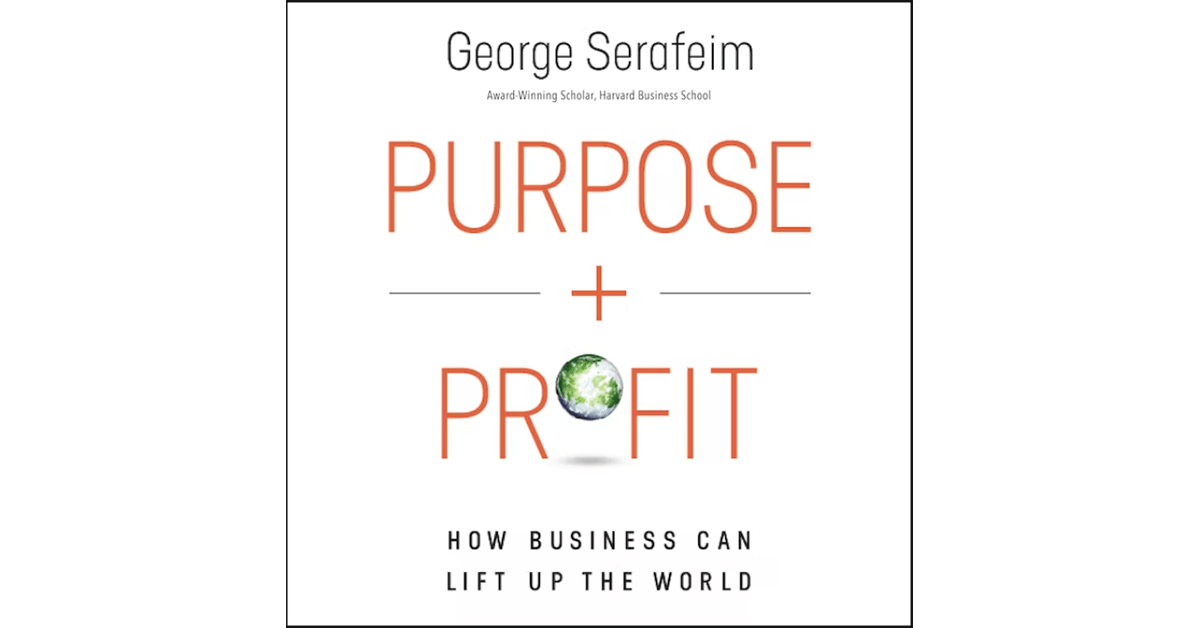Purpose and Profit: How Business Can Lift up the World. 2022. George Serafeim. HarperCollins Leadership.
In Purpose and Profit: How Business Can Lift up the World, renowned author George Serafeim provides a roadmap and best practices for businesses to achieve long-term competitive advantage by prioritizing environmental, social, and corporate governance (ESG) goals alongside profiting. The book emphasizes the significance of ESG factors, particularly in the wake of the COVID-19 pandemic, making it a must-read for investors. Incorporating ESG factors is now seen as a crucial part of asset managers’ fiduciary duty to investors, rather than being considered “soft” or irrelevant.
Based on extensive research, Serafeim reveals that purpose-driven firms that improve their performance on material ESG issues outperform competitors by more than 3% annually. Additionally, companies that responded to the COVID-19 pandemic with significant efforts to protect stakeholders outperformed their peers by about 2.2% during the stock market collapse in March 2020.
There has been a significant shift in the importance of ESG issues over the past five decades. Initially, sustainability initiatives were often perceived negatively by analysts and considered a waste of shareholder resources. However, in recent years, companies with strong ESG performance have received more positive analyst recommendations. This shift is reflected in the increasing adoption of the UN Principles for Responsible Investment (PRI) and the integration of ESG topics into financial education and professional certifications, such as the CFA Institute Certificate in ESG Investing program.
Serafeim emphasizes the need for companies to focus on financially material ESG issues specific to their industry. Improving performance on nonmaterial ESG issues may not yield significant performance differentials. For example, commercial banks should prioritize issues such as access to finance for underserved populations, customer data privacy, environmental risks in loans, and anti-corruption practices. Agricultural product companies, on the other hand, should focus on greenhouse gas emissions, water management, employee safety, and climate-related crop risks.
A notable example highlighted by Serafeim is the $1.6 trillion Japanese Government Pension Investment Fund, which aims to make the entire investment universe more sustainable. This approach reflects the long time horizons of pension funds and their role as “stewards of the commons.” The largest investors have the power to influence sustainability across industries and address material threats to their investment holdings.
The book’s final chapter explores the importance of alignment between values and work for the “Impact Generation.” The author suggests that working at a currently misaligned company may be acceptable if individuals have the agency to bring about change. The slope of alignment, rather than the current level of alignment, determines the potential reward. The decision ultimately depends on an individual’s patience and personal discount rate.
If you liked this post, don’t forget to subscribe to the Enterprising Investor.
All posts are the opinion of the author. As such, they should not be construed as investment advice, nor do the opinions expressed necessarily reflect the views of CFA Institute or the author’s employer.
Professional Learning for CFA Institute Members
CFA Institute members have the autonomy to self-determine and self-report professional learning (PL) credits earned, including content on Enterprising Investor. Members can easily record credits using the online PL tracker.
Key Points:
- “Purpose and Profit: How Business Can Lift up the World” by George Serafeim provides guidance on achieving long-term competitive advantage by prioritizing ESG goals alongside profit.
- ESG factors are now considered crucial in business and asset managers’ fiduciary duty to investors.
- Purpose-driven firms that improve performance on material ESG issues outperform competitors by over 3% annually.
- Companies that responded to the COVID-19 pandemic with efforts to protect stakeholders outperformed peers by about 2.2%.
- There has been a shift in the perception of ESG issues from being negative and wasteful to receiving positive analyst recommendations.
- Industry-specific material ESG issues should be prioritized for meaningful performance differentials.
- The $1.6 trillion Japanese Government Pension Investment Fund exemplifies the importance of sustainability for long-term investors.
- Alignment between values and work is crucial for the “Impact Generation,” and the potential reward depends on the slope of alignment.
- CFA Institute members can record professional learning credits for “Enterprising Investor” content using the online tracker.







